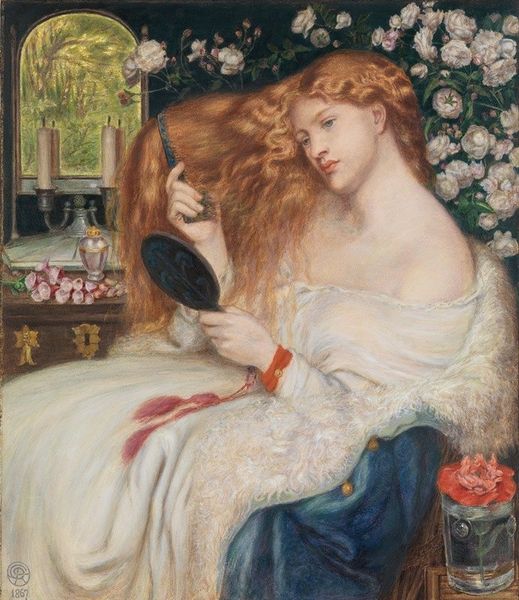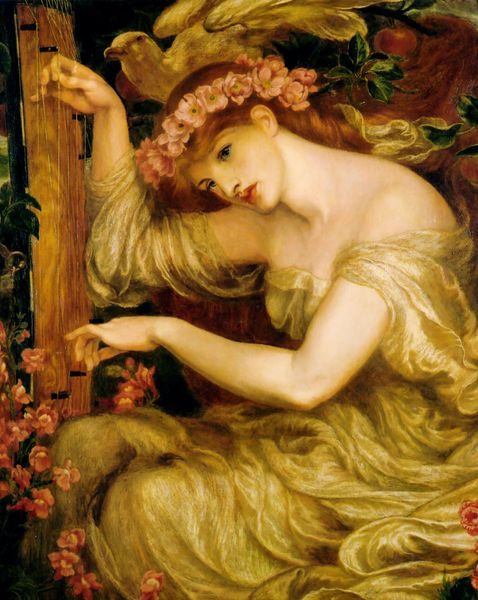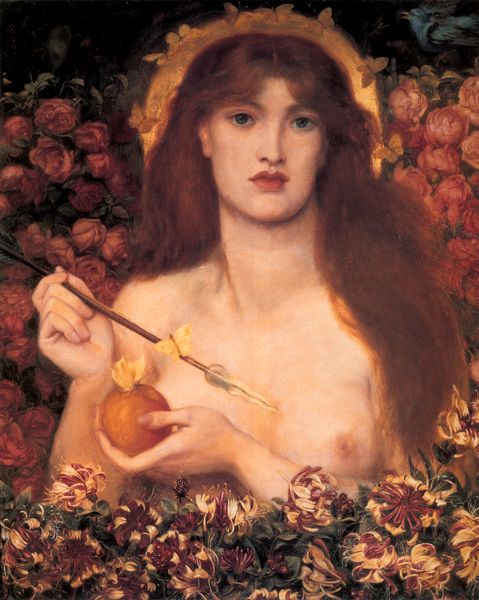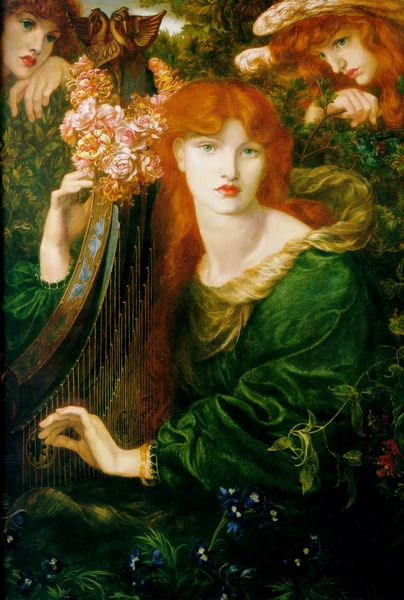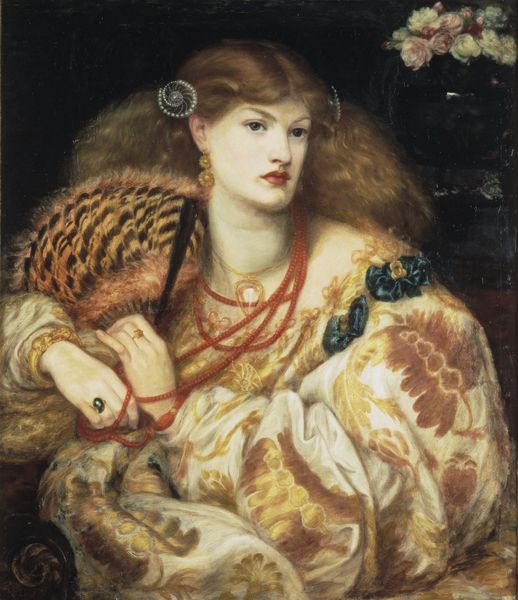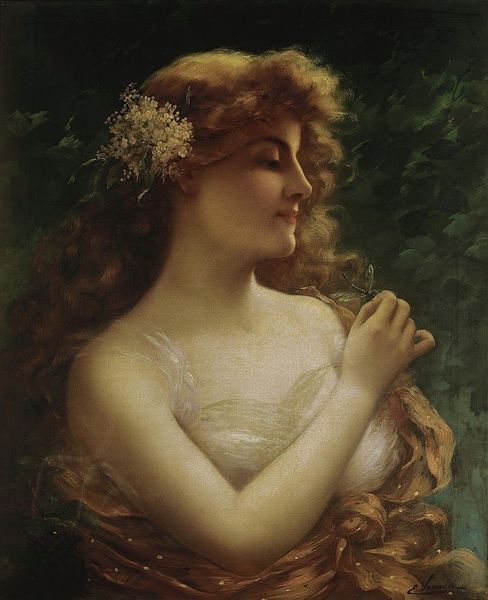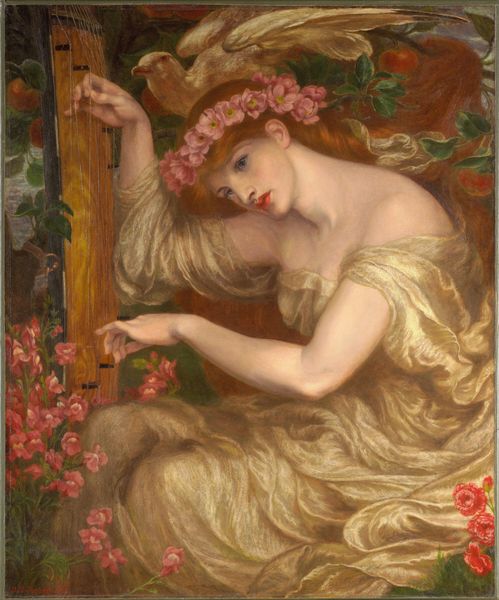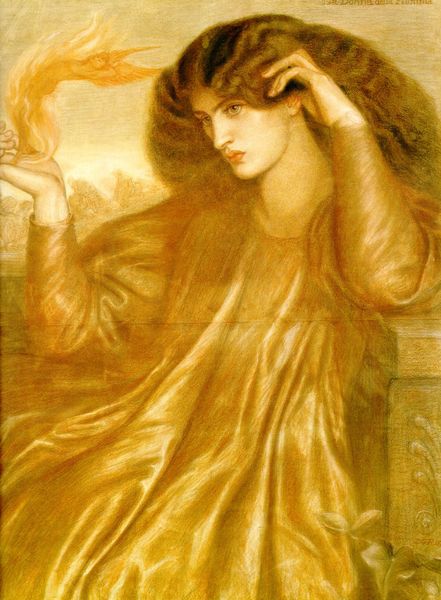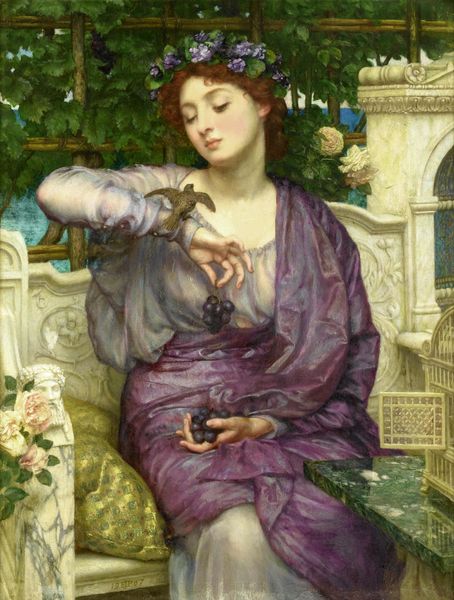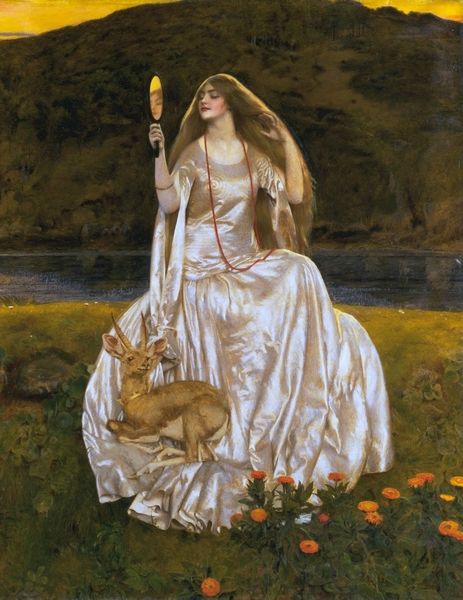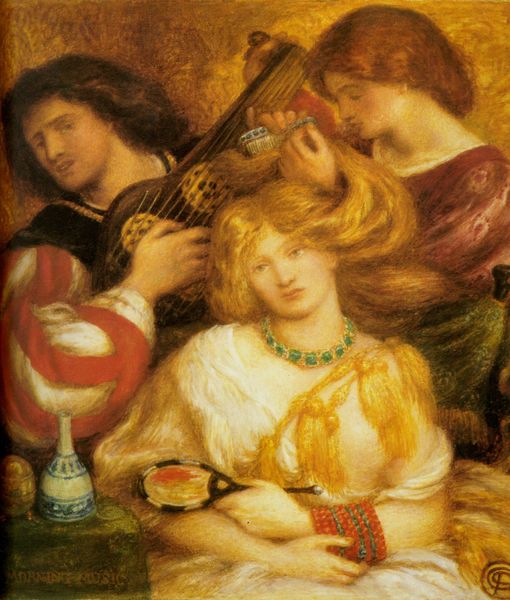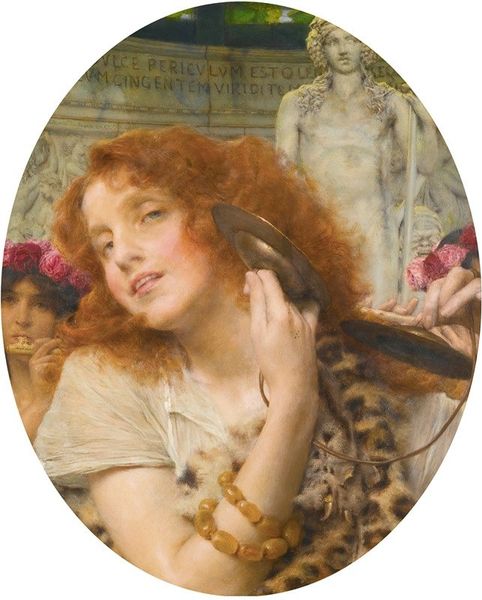
Dimensions: 81.3 x 95.3 cm
Copyright: Public domain
Curator: Here we have Dante Gabriel Rossetti's "Lady Lilith," an oil painting completed in 1873. Its display here at the Delaware Art Museum offers us a chance to delve into Pre-Raphaelite aesthetics and symbolism. Editor: It strikes me as a potent image—heavy with atmosphere. The way her red-gold hair seems to physically vibrate against the dark backdrop, contrasted by the ethereal whites and pinks of her surroundings, lends a slightly unsettling, almost intoxicating mood. Curator: The Pre-Raphaelites, indeed Rossetti, often deployed colour to emotional and symbolic effect. Consider the pervasive motif of flowers: The poppy signifies oblivion and the beauty can be seen in relation to notions of femininity that haunted the Victorian imagination. Editor: And that hair! It’s less about literal representation and more about creating a mythic archetype. It's an exaggeration, a fantasy—the archetypal femme fatale weaponizing her beauty, rather than the passive beauty typically found in paintings by male artists. There is something so subtly confrontational about it. Curator: Absolutely. Rossetti was interested in re-interpreting classic myths through the lens of beauty, specifically Pre-Raphaelite beauty, of course. Lilith herself represents, as a symbol, so many things—independence, primal femininity, even the dangers inherent in untamed womanhood. Editor: I also can’t help but read this in the context of Victorian society, which so often sought to control female sexuality. This painting feels like a challenge to that control. The overt sensuality here, the deliberate act of beautification, strikes me as powerful statement for Rossetti’s time, challenging dominant societal roles, even if unconsciously so. Curator: These types of images would spark intense debate for decades afterward precisely because of the psychological and societal themes they provoked. We are continuing that conversation here today, adding contemporary interpretations to those earlier reflections. Editor: Ultimately, what makes this such a resonant piece is how Rossetti manages to weave all of these complex social and historical ideas with an arresting and powerful image that seems so vivid to this day. It speaks volumes, and continues to challenge our perceptions.
Comments
No comments
Be the first to comment and join the conversation on the ultimate creative platform.
